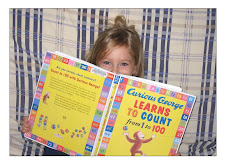
Bibliographic Information
Shange, Ntozake. CORETTA SCOTT. Paintings by Kadir Nelson. Washington, D.C. Katherine Tegen Books. ISBN: 9780061253645.
Summary and Analysis
The text begins with a calm summer morning from Coretta Scott's childhood and covers her growing up and introduction into her adult life. Throughout the text her belief in equality and her focus on improving people's lives is present through the lines of text and the gorgeous paintings. It touches upon the civil rights movement with the Montgomery bus boycott and sit ins, which are subtle introductions to an important part of our history.
The style is free verse and flows like a long thought. This brief introduction into her life is told more as a story telling and less of a biographical passage, which fits not only with the words but with the message of hope and determination. Struggles are addressed and hardships shown, yet it is Coretta Scott's hope and faith that is the emotion the reader is left with. A few of the pages seem to jump to a different thought without an easy progression, but that is not enough to take away from this beautiful look into a special woman's life.
The paintings are more like images seen outside a window. Most are close up as if the reader is sitting with the subjects or is nearby. This makes the story of Coretta Scott's life more personable. The paintings are haunting, colorful, and the faces are large. In some the faces of Coretta and her siblings as children will be as large as the children reading the book. For those that want to know more about Coretta than is provided in the poem, there is a a biography and photo of her offered in the back of the book.
Highlighted Poem
Martin Luther King Jr. a young preacher
prayed for freedom
Coretta prayed
two minds attracted in prayer
yes they could do something
among the many
who thought moral power
would overturn Jim Crow
they prayed together
found joy
and were married
Connections
Biographical poetry offers an educational opportunity to showcase a significant person as well as important times of history. This text is no different. If educators are doing a lesson on biographies, poetry could be brought into it with similar texts. Or for annual events such as Black History Month, biographical poetry could be inserted to the theme as well. In addition, the cultural history of the eras portrayed in biographies offer a chance for teachers to expand on social studies or geography as well as a biographical focus.







